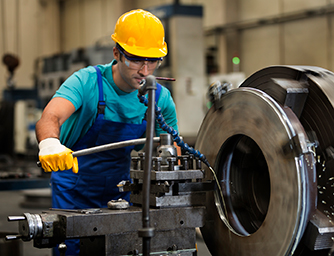Is Human and Organizational Performance (HOP) a New Approach to Safety?
Recently there have been articles and discussions about a “new” approach to safety called Human and Organizational Performance or HOP. It has its foundation in the work of Sidney Dekker and James Reason and focuses on the human element of safety. It starts with the assumption that human error is inevitable and that error is a symptom of problems within organizational systems. This approach proposes (among other things) using leading indicators, minimizing negative consequences and other strategies that drive underreporting of incidents and near misses, and including the people who do the work in identifying safety solutions. I have long been a fan of Reason and Dekker. Their insistence that blame and punishment are destructive in safety is very much in keeping with the proven behavioral approach to which I have dedicated my professional life. Furthermore, the belief on the part of Dekker, Reason and others that solutions to safety challenges can be found by understanding the organizational systems within which people work, also aligns with a behavioral approach. In fact, in our book Safe by Accident, Aubrey Daniels and I reference the work of Dekker and Reason and note the complementary nature of their approach.
 While I agree with the tenets of HOP, what concerns me is that there have been some supporters of HOP who bill it as anti-Behavior-Based Safety (BBS). This rhetoric is either a marketing ploy by consultants trying to capitalize on anti-BBS sentiment or a fundamental misunderstanding of a behavioral approach to safety. I may not be able to do anything about the former, but I can address the latter.
While I agree with the tenets of HOP, what concerns me is that there have been some supporters of HOP who bill it as anti-Behavior-Based Safety (BBS). This rhetoric is either a marketing ploy by consultants trying to capitalize on anti-BBS sentiment or a fundamental misunderstanding of a behavioral approach to safety. I may not be able to do anything about the former, but I can address the latter.
Behavior-based safety, also commonly referred to as behavioral safety, is so named because it has its foundations in the science of behavior: a scientific field of study called Behavior Analysis. Behavior Analysis seeks to understand behavior by looking at the environmental contingencies that influence behavior, past and present. Said differently, behavior is understood by looking at the context within which behavior happens—in this case the workplace. Behavior Analysis is very much a systems approach because it is understood that the influencers of behavior (antecedents and consequences) come from not just people (e.g., managers, peers), but the physical environment (e.g., equipment, layout of workspace), and organizational processes (e.g., incentives, measurement systems). In short, all organizational systems have the potential to influence safe and at-risk behavior. Once all of the variables that influence behavior are understood, adjustments can be made to make it easier for workers to make safe choices.
 It is important to note that it is not just the frontline workers who make safe or at-risk choices. Effective BBS programs include a focus on management behavior, not just frontline behavior. Management creates and maintains the systems within which people work so their behavior (creating and maintaining systems that support safety) is an important focus of a good behavioral approach. A behavioral approach also helps us see the dangers in blaming frontline workers for at-risk behavior. Blaming workers for systems they don’t control is unjust. Furthermore, the inevitable punishment that accompanies blame leads to workers keeping quiet about near misses, at-risk behaviors, and conditions that could lead to improved safety. As Dekker notes, blame stifles organizational learning.
It is important to note that it is not just the frontline workers who make safe or at-risk choices. Effective BBS programs include a focus on management behavior, not just frontline behavior. Management creates and maintains the systems within which people work so their behavior (creating and maintaining systems that support safety) is an important focus of a good behavioral approach. A behavioral approach also helps us see the dangers in blaming frontline workers for at-risk behavior. Blaming workers for systems they don’t control is unjust. Furthermore, the inevitable punishment that accompanies blame leads to workers keeping quiet about near misses, at-risk behaviors, and conditions that could lead to improved safety. As Dekker notes, blame stifles organizational learning.
Unfortunately, when BBS became popular, BBS consultants and BBS processes proliferated. Some of these were clearly subpar. In the worst cases, some programs were not based on the science of behavior at all and ended up being interpreted as “blame the worker,” where a very narrow idea of behavior and its causes was proposed. These programs were not designed by those fluent in the science of behavior and thus failed to take the broader systems perspective. In addition they included some other fatal flaws like a focus on at-risk behavior and corrective feedback rather than a focus on strengthening safe behavior through positive strategies. Other programs, while not “blame the worker,” were nonetheless designed with a superficial knowledge of behavior and were less effective than they could have been.
Unfortunately, but understandably, these subpar programs resulted in the rise of anti-BBS sentiment in some organizations. But to reject a behavioral approach to safety because some people misapplied it is like rejecting antibiotics because some people don’t take them correctly. Antibiotic medicines are based in science and have been proven extremely effective. However, if you don’t take the correct dosage or fail to complete the full course, they won’t work or won’t work well. Similarly, behavioral safety is based in science and has been proven extremely effective. However, if it isn’t implemented properly it won’t work or won’t work well.
 Sustained safety improvement requires changing behavior (i.e., human performance). It requires changing the behavior of executives, managers, supervisors and frontline employees alike: behaviors related to hazard identification and remediation, behaviors related to modifying incentive systems so they don’t encourage underreporting, behaviors related to developing near miss reporting systems that truly encourage reporting, and behaviors related to following rules and procedures. It is all behavior. Behavior is how we accomplish all of the things we need to accomplish in safety. To be anti-BBS is to ignore the proven science of behavior—the science that provides the strategies to motivate all the behaviors we need to create and sustain a safe workplace. That is akin to a drug company deciding to be anti-chemistry.
Sustained safety improvement requires changing behavior (i.e., human performance). It requires changing the behavior of executives, managers, supervisors and frontline employees alike: behaviors related to hazard identification and remediation, behaviors related to modifying incentive systems so they don’t encourage underreporting, behaviors related to developing near miss reporting systems that truly encourage reporting, and behaviors related to following rules and procedures. It is all behavior. Behavior is how we accomplish all of the things we need to accomplish in safety. To be anti-BBS is to ignore the proven science of behavior—the science that provides the strategies to motivate all the behaviors we need to create and sustain a safe workplace. That is akin to a drug company deciding to be anti-chemistry.
Safety practices evolve—they must in order to keep pace with changing workplaces. We must all continuously improve. There are many elements of the HOP movement that add to our understanding and management of the human element of safety. Particularly helpful is the call for a philosophical shift to accepting human error as inevitable and looking to systems to minimize error. Also helpful is promoting the fact that setting up rule after rule, procedure after procedure, and then punishing those who don’t follow them only serves to decrease organizational learning. These ideas are good AND they are aligned with BBS; they are not in opposition to it. Human error is behavior. Human performance is behavior. Preventing or minimizing error requires understanding behavior. Let’s not confuse people by saying that human performance is something different from human behavior. It is not.
 We all have the same goal—to create safer workplaces and minimize human suffering. That requires change on the part of the humans within the organization. People are always looking for a quick fix that will solve all our complex safety problems. There are no quick fixes. What we do have is the science of behavior and it provides us with a framework to understand human performance. That framework helps us design strategies to make the necessary systems changes to support productive, safe performance. When it comes to Human and Organizational Performance (HOP) and Behavior-Based Safety (BBS), it’s not an either/or. Let’s keep working together, building on what we collectively have learned, and keeping the science of behavior as our foundation.
We all have the same goal—to create safer workplaces and minimize human suffering. That requires change on the part of the humans within the organization. People are always looking for a quick fix that will solve all our complex safety problems. There are no quick fixes. What we do have is the science of behavior and it provides us with a framework to understand human performance. That framework helps us design strategies to make the necessary systems changes to support productive, safe performance. When it comes to Human and Organizational Performance (HOP) and Behavior-Based Safety (BBS), it’s not an either/or. Let’s keep working together, building on what we collectively have learned, and keeping the science of behavior as our foundation.
References
Agnew, J. & Daniels, A. (2010). Safe by Accident? Take the Luck out of Safety. Performance Management Publications. Atlanta, GA.
Dekker, S. (2007). Just Culture: Balancing Safety and Accountability.
Ashgate Publishing Company. Burlington, VT. Reason, J. (1990).
Human Error. Press Syndicate of the University of Cambridge. New York, NY.


